Hasegawa | Fw 190D-9
Reviewed by Jerry Crandall
When I opened the box, the first thing I did was to compare it with the old 1/32 High grade Dora 9 from Hasegawa. Immediately it was obvious that it is a totally new kit.
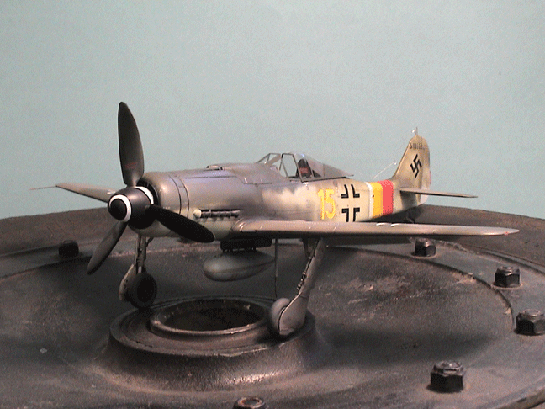
1. The overall outline and dimensions are exact to Abe’s and Seay’s drawings.
2. A disputed point on the 1/48th kits is the length of the landing gear and size of the main wheels. The old high grade kit had metal landing gear which was the proper length but the Oleo strut was over extended and very thin causing the model to sit too high, almost stork like. This new kit, the landing gear leg itself is dead on and Hasegawa has slightly shortened and thickened the Oleo strut to give it the proper set. The only thing that is left off is the hydraulic brake line that runs the length of the leg itself. The wheel supplied in the kit is the smooth tire but is lacking the detail mold lines of the real tire; nevertheless, it is the exact size. Both the landing gear leg and the wheels were measured to originals in our collection.
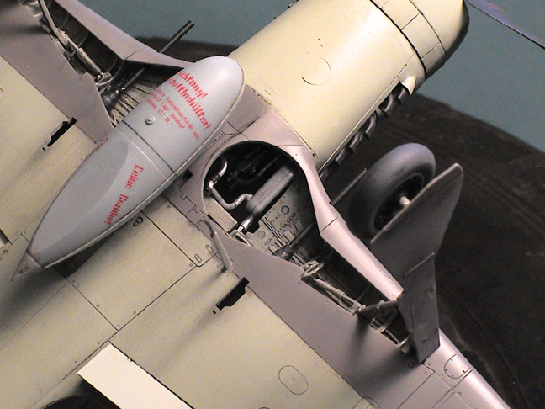
3. The cockpit assembly is very basic and will probably satisfy most modelers but there is room for improvement. There are no seatbelts supplied or acknowledged in the instructions.
4. The rear portion of the engine that is visible through the open wheel wells, is made up of several parts including pipes and tubing that, when put together, forms an open bottom tub that fits into the fuselage just in front of the cockpit assembly. When painted and positioned, it looks very convincing. Care must be taken with regard to installing both the cockpit tub and the wheel well tub. If these assemblies are not properly in place, this will cause problems in fitting the wing to the fuselage at a later step.
5. The tail section is a separate assembly engineered much like the Bf 109 G kit. The reason for this is, the next version of the Dora series will offer the Ta 152 metal tail. Unfortunately the tail wheel, which is the proper size, is molded together with the tail wheel yoke and is not very convincing.
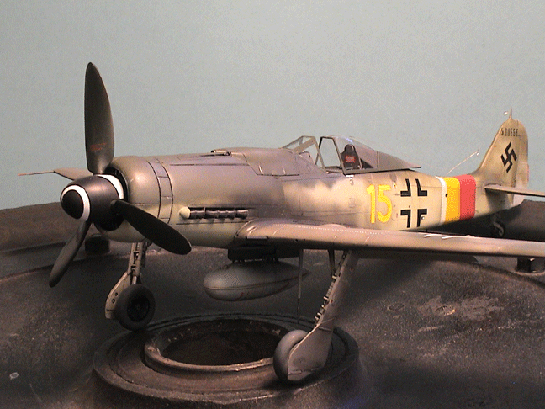
6. The exhaust stubs are broken into three groups to be installed in a shadow box, but unfortunately the exhaust stubs are solid and have no indentation or hollowed effect at all.
7. Both the open and shut cowl flap piece are provided. The system for attaching the radiator cowling is very unusual and clever.
8. The wheel well with its proper open inner section is combined with the main wing spar, molded with the dihedral built in which is the heart of the wing assembly, to which the lower and upper wings are attached.
9. The flaps are nicely detailed and are open, but unfortunately the molded-on tabs are angled too severely causing the open flaps to be almost vertical.
10. The upper wings have indications for installation of upper wing outboard cannon bulges for a future type, possibly a D-11 maybe or is this wing going to be part of a future “A” series? Unfortunately there are quite a few sink marks in the upper wings especially where the spar supports are molded inside.
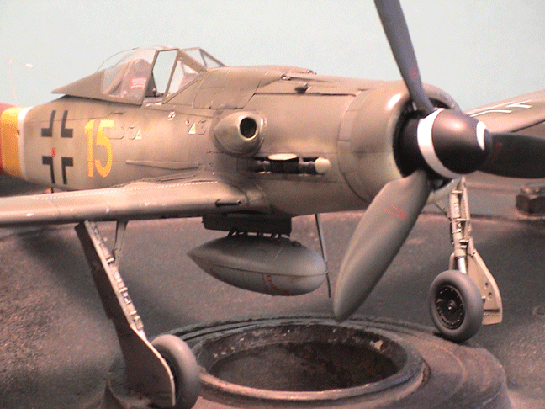
11. The upper wing has a socket into which the square plug on the top of the landing gear leg snaps securely automatically setting the proper forward rake and inward angle that is difficult to obtain on other Fw 190 kits.
12. The lower wing armament panel is a separate piece, which indicates different armament in the future.
13. The fuselage halves are cleverly engineered so when they are glued together, the panel lines are in the proper place, no filling is required. For instance, the panel line on the top of the rear fuselage between the cockpit and the extended center section is offset to the starboard as is the real machine.
14. The spinner and propeller blades are very accurate and well engineered for assembly.
15. Both the standard and blown canopy are provided, beautifully molded and detailed. Attached to the rear of the headrest is the tube that slides into the groove on the rear cockpit decking – a nice touch.
16. Included is an ETC 504 rack and a very nice E2 light steel drop tank
17. The upper gun cowling and gun troughs are molded into one piece. The gun cowling has the early 5 piece style gun cowl, but they instruct you to fill the panel lines as this cowling is not appropriate to any of the decals supplied with the kit. They must plan to do an early 210 series D-9 or “Red 13” from JV 44, in a future release that requires this 5 piece cowling.
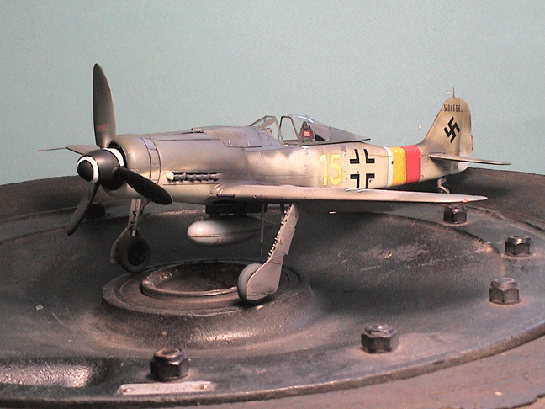
18. The overall fit is excellent however, I had problems fitting the wing assembly to the fuselage especially in the wing root area, but keep in mind I really rushed the construction and this may not be a problem if you take your time for a normal construction. It is a little fussy because of the open wheel wells, the open flaps and installing the separate center section between the wheel wells.
19. A disappointment, and to me very noticeable, is the 20 mm cannon barrel that protrudes through the leading edge of the wing is slightly undersized and is just a plastic rod so I substituted aluminum tubing which is more convincing.
20. Decals supplied with the kit are nicely detailed and registered but are very thick. The “Red 3” for Wubke’s a/c is the wrong shape. They obviously took this ‘3’ from my book Doras of the Galland Circus, which at press time, we had to guess at the shape of the ‘3’. Later, we released our decal sheet EC#14 R after we saw a new photo and changed the ‘3’ to a more squarish shape. The first word of the slogan on the side of “Red 1” is misspelled. The correct spelling is “Verkaaft’s”, not “Verkauft’s”. They do supply the white stripes for the undersides and a partial black spiral for the rear of the spinner that shows through on “Red 1”. Unfortunately there is no stenciling such as “Keine Bombe” for the drop tank.
I’ll send more information and photos along with a list of EagleParts that we will be offering as aftermarket resins. In addition, we are re-printing the Papegei Staffel Doras of the Galland Circus EagleCals #14 in 32nd (the old EC#23-32) and in 48th and 72nd.
Summary: Overall it is an excellent kit, nicely engineered with a lot of good touches, only a few parts need improvement which we will offer in resin. This kit is not as easy to build as the Bf 109 series mainly because of the complicated open wheel well assembly.
© Jerry Crandall 2003
This review was published on Saturday, July 02 2011; Last modified on Tuesday, June 14 2016
